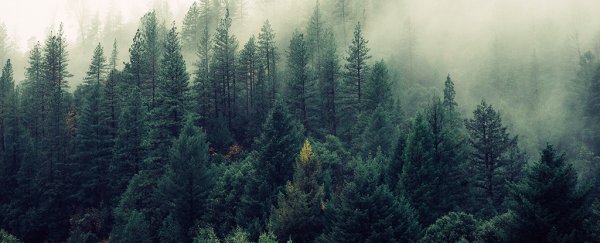Reforestation is one of the ways we have of trying to mitigate climate change, but choosing where to plant trees is a more complex decision than you might think. This is why researchers have now come up with an interactive map showing the best spots to reforest in the US.
It's called the Reforestation Hub, and it color codes counties to show the reforestation opportunity or potential for success in each area. The team behind the map is hoping it proves a valuable resource for the government and individual conservation agencies.
"Often the information we need to make informed decisions about where to deploy reforestation already exists, it's just scattered across a lot of different locations," says forest restoration scientist Susan Cook-Patton, from the Nature Conservancy organization.
"Not everybody has the computer science experience to delve into the raw data, so we tried to bring this information together to develop a menu of options for reforestation, allowing people to choose what they would like to see in their community, state, or nation."
In total, the team found about 51.6 million hectares (almost 200,000 square miles) of forest restoration opportunities in the US, discounting areas where tree planting isn't feasible or where the land is otherwise used (for productive crops, for example).
Were all that land to be reforested, it could capture around 314.2 million tons of carbon dioxide each year, the researchers worked out. That's 15 percent of the reduction commitment the US has made as part of the Paris Agreement, and more than all the emissions produced by personal vehicles in California, Texas, and New York combined, or roughly 67 million vehicles.
Through the course of their analysis, the researchers looked at how land was currently used, how costly it would be to convert, and what other benefits beyond carbon capture the reforestation in a particular area might bring (reducing urban heat, for example).
"While there's no single best place to restore forest cover, we did find a particularly high density of opportunity in the southeastern United States," says Cook-Patton.
"This is a region where carbon accumulation rates are high, costs are low, and there is a lot of opportunity to achieve multiple benefits like creating habitats for biodiversity, improving water quality, and climate mitigation."
Other important factors, such as whether areas have already been marked as national forest land and the likelihood of flooding in a region, were also taken into account to produce the finished map.
The finished map splits the US into a grid showing 10 different categories of land, from urban open spaces to post-burn lands recovering from fires. The most promising areas for conversion are areas currently used for pasture: not only because of the carbon dioxide that would be captured but also because it might help reduce our meat consumption.
Reforestation isn't going to fix the climate crisis on its own, but knowing exactly where it can work best – and the best ways of going about it – can seriously improve its impact. The researchers already have plans to work on similar maps for other countries.
"We have about a decade to get climate change in check, and I am excited about the potential for this study to help accelerate decisions to invest in reforestation as a climate solution," says Cook-Patton.
The research has been published in One Earth.
